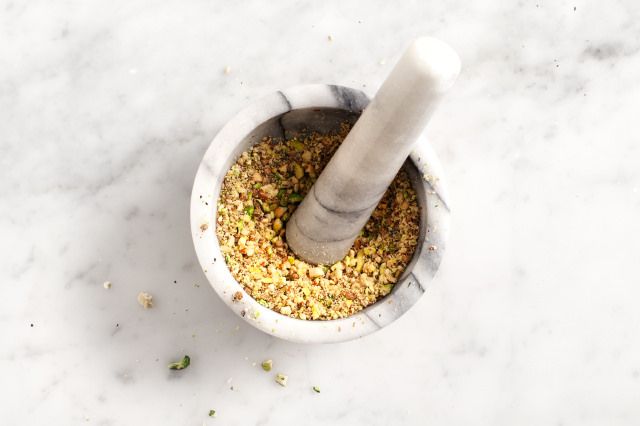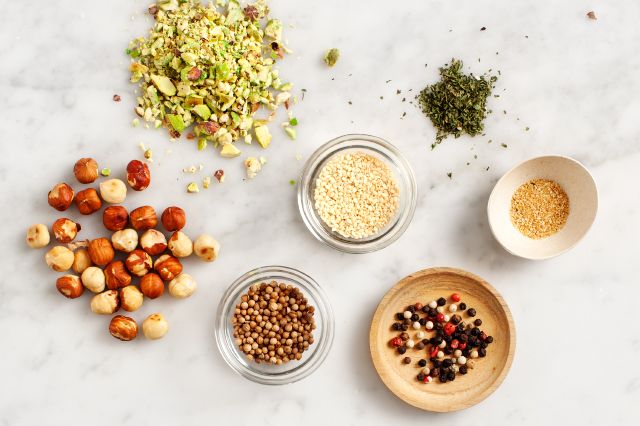Popular on Food52
5 Comments
karmaya
March 26, 2014
in my experience dried cilantro has barely any taste, so why bother using it here? I'm thinking perhaps it would make more sense to make the mixture without it, adding finely minced fresh cilantro just before using the dukkah as a condiment in a dish....
J. P.
March 25, 2014
I make a version of this all the time. I usually add it to a olive oil matzo recipe I found in the NY Times. I also use it with panko and butter and cover a rack of lamb with it. Both are very tasty.
AntoniaJames
March 25, 2014
Certain family members liberally slather flatbread or toasted slices of my artisanal bread with Genius Ottolenghi hummus followed by a few hearty pinches of my homemade dukkah, and call it "lunch." ;o)
AntoniaJames
March 25, 2014
A certain family member to remain unnamed has also been known to stuff a big handful of arugula in the flatbread referred to above, fold it over, and call it "dinner." (Did I mention that I make triple batches of that hummus? It freezes really well, if you refresh it with lemon juice, your greenest, liveliest olive oil, and dukkah or za'atar.) ;o)




See what other Food52 readers are saying.